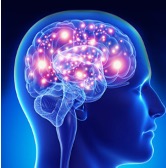The future prospects of cell
and gene therapy

Neurological Disorder
Role of Cell and Gene Therapy in Neurological Disorder
- Parkinson’s Disease
- Gene Therapy: Gene therapy for Parkinson’s disease aims to restore dopamine production in the brain. For example, the delivery of the AADC (Aromatic L-Amino Acid Decarboxylase) gene using adeno-associated virus (AAV) vectors can enhance dopamine synthesis in the neurons, improving motor symptoms.
- Cell Therapy: Transplantation of dopaminergic neurons derived from stem cells is being investigated to replace the lost neurons in Parkinson’s patients. These stem cells can differentiate into dopamine-producing neurons and integrate into the brain’s existing neural network.
- Alzheimer’s Disease
- Gene Therapy: Gene therapy strategies for Alzheimer’s focus on reducing the production of amyloid-beta plaques and tau tangles, which are hallmarks of the disease. For instance, using viral vectors to deliver genes that encode for enzymes like neprilysin, which degrades amyloid-beta, has shown potential in reducing plaque formation
- Cell Therapy: Stem cells, particularly MSCs, are being explored for their ability to modulate the immune response, reduce neuroinflammation, and support neural repair. Preclinical studies have demonstrated that MSCs can secrete neurotrophic factors that support neuron survival and function.
- Amyotrophic Lateral Sclerosis (ALS)
- Gene Therapy: In ALS, gene therapy aims to silence or correct mutations in genes such as SOD1 and C9orf72, which are associated with the disease. Techniques like antisense oligonucleotides (ASOs) and CRISPR-Cas9 are being used to target and modify these genes, potentially slowing disease progression
- Cell Therapy: Transplantation of neural stem cells or glial-restricted precursors into the spinal cord can provide trophic support and potentially replace lost motor neurons. These approaches aim to protect existing neurons and promote the growth of new neural connections
- Spinal Cord Injury
- Cell Therapy: Stem cell transplantation, particularly using oligodendrocyte progenitor cells and neural stem cells, is being explored to repair damaged spinal cord tissue. These cells can differentiate into neurons and glial cells, promoting remyelination and neural regeneration, which can improve motor function and sensory recovery
- Gene Therapy: Gene therapy can be used to deliver neurotrophic factors that enhance the survival and growth of neurons. For example, the delivery of brain-derived neurotrophic factor (BDNF) or glial cell-derived neurotrophic factor (GDNF) can support neural repair and functional recovery after spinal cord injury.
- Huntington’s Disease
- Gene Therapy: Huntington’s disease is caused by a genetic mutation in the HTT gene. Gene silencing techniques, such as RNA interference (RNAi) and ASOs, aim to reduce the expression of the mutant huntingtin protein, thereby slowing disease progression. Clinical trials are underway to evaluate the safety and efficacy of these approaches
- Cell Therapy: Stem cell approaches aim to replace the damaged neurons and support the brain’s regenerative processes. For example, MSCs and induced pluripotent stem cells (iPSCs) are being investigated for their ability to differentiate into neural cells and integrate into the brain, potentially restoring lost functions.
- Multiple Sclerosis (MS)
- Gene Therapy: Gene therapy strategies for MS focus on modulating the immune system to prevent the autoimmune attack on myelin. Techniques like CRISPR-Cas9 are being explored to edit genes involved in immune regulation, potentially reducing the progression of the disease
- Cell Therapy: Autologous hematopoietic stem cell transplantation (AHSCT) has shown promise in “resetting” the immune system in patients with aggressive MS, leading to sustained remission in some cases. Additionally, MSCs are being studied for their potential to promote remyelination and reduce neuroinflammation.
